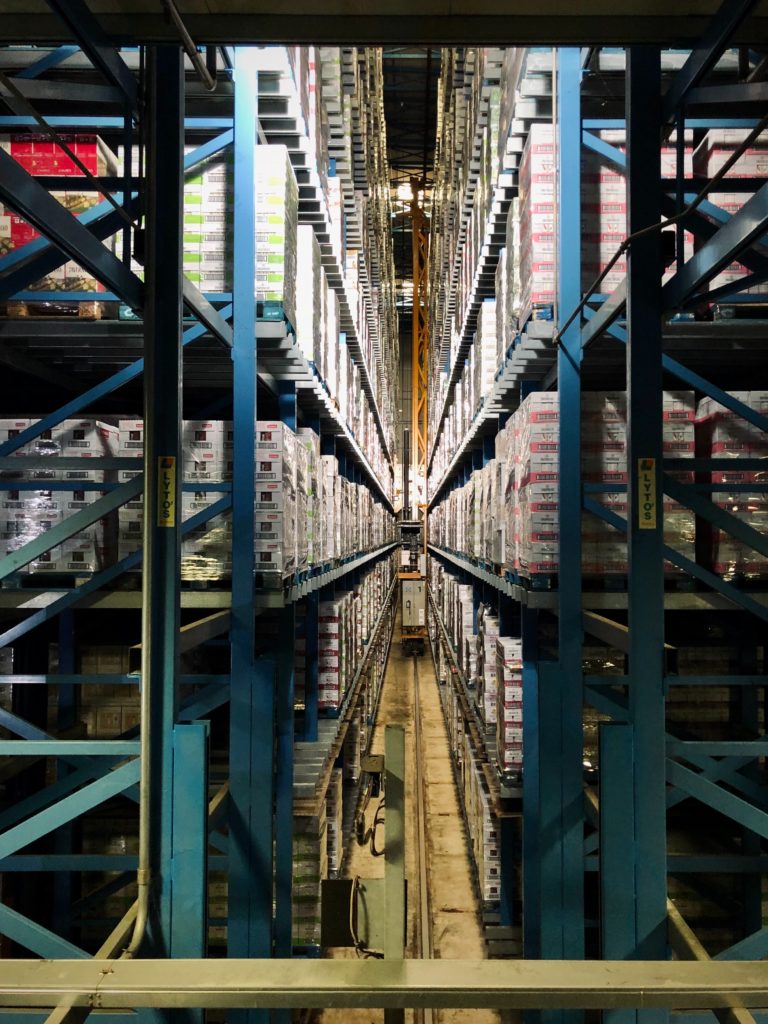Tips to Optimize Your Warehouse Logistics Strategy
How to Resolve Your Warehouse Logistics Issues
Warehouse logistics are a central component of the supply chain industry. Effective logistics allow you to deliver orders to customers at the lowest price for both you and them.
However, many facilities face challenges regarding logistics, preventing them from maximizing their cash flow.
Keep reading to learn the solution to the most common logistics issues in warehouses.
What Is Warehouse Logistics?
Warehouse logistics is the physical flow of items during receiving and shipping and includes the data associated with this process.
The physical flow of goods is the process of receiving a product at the warehouse, storing it in a put-away bay, and transferring it to a storage location once one is assigned.
Then, when an order is received, the item must be located within the warehouse and shipped to the customer.
What Are the Goals of Warehouse Logistics?
The primary purpose of logistics is to minimize operational costs while maintaining service quality.
Therefore, having a solid understanding of it will enable you to keep an efficient warehouse operation.
Warehouse logistics strives to:
- Maximize the use of storage space.
- Organize the workforce optimally.
- Leverage handling equipment.
- Ensure that goods are accessible.
- Maintain security to mitigate damage and theft.

Common Challenges of Warehouse Logistics
If you’re looking to future-proof your operation, you must first overcome the warehouse logistics barriers that limit your performance.
Once you overcome these barriers, you will exceed customer service expectations and skyrocket the value of your supply chain facility.
Here are some of the most common warehouse logistics issues today:
Space Utilization and Warehouse Layout
Even if you have an above-average-sized warehouse, you will still run into issues if it’s unorganized. Your warehouse design should suit your operational needs and your workflows.
When organizing your facility, if you don’t take your needs in terms of the accessibility of products into account, your product flow will be slow and inefficient.
Solution
One of the best ways to use warehouse logistics to optimize your layout is by ensuring that your most high-demand items are easily accessible for fast picking and order fulfillment.
When you keep these items near the front of your warehouse, lift drivers won’t have to travel as far to access them, which speeds up your whole operation.
Quality Control
Many warehouse facilities put the workers who pick, pack, and ship in charge of quality control. This leaves many errors and quality issues unaccounted for and shipped out to the buyer as-is.
Quality control also means looking at the standard weights and measurements of the objects. In businesses, where floor scales are not used, higher logistic and delivery charges end up being a nightmare. The company needs to be aware of the weight and dimensions of what it is shipping out to the customers.
However, sending out inaccurate orders leads to lower customer satisfaction levels, leaving them less likely to purchase from your company again.
Solution
A separate quality control station provides the ability to manage inventory issues efficiently while giving your employees a higher level of accountability.
Additionally, assigning people to quality control tasks helps to record vendor accuracy, improve stock rotation, and reduce the amount of manual processing of items.
Low picking productivity
Many supply-chain facilities don’t take the time to implement an efficient pick system, making picking the area where most logistics issues occur.
The lack of an organized pick process leads to order delays, inaccurate orders, and wasted time, damaging your bottom line.
Solution
If you want to optimize your picking processes, you need to integrate a system that works with your operation and ensure that you are fully compliant with that system.
Because picking tasks are often done in a hurry, it’s necessary to take the time to ensure that your team is paying attention to record-keeping. That way, your system is accurate and reliable.
Inventory accuracy
Keeping track of inventory is one of the most difficult parts of managing a warehouse. Generally speaking, most inaccurate inventory counts are due to human error.
However, it’s essential to ensure that these counts are accurate because when you lack visibility into your inventory, you are likely to run out of stock or carry too much stock.
Solution
Inaccurate inventory counts can be easily mitigated with an inventory management system. An automated system will decrease human error and miscounts when conducting inventory counts.
Additionally, the platform will save you time, allowing your employees to take inventory more frequently.
Inventory Location
Typically, inventory location issues develop over time as new items are added to your stock, and you begin to run out of space.
When the location of your inventory isn’t organized or lacks oversight, it creates a domino effect on the rest of your operations, decreasing your overall efficiency.
Solution
A simple fix to inventory location issues is to re-organize your warehouse and ensure that pickers can easily find and access items.
Sorting items by commonalities or developing a numerical system are all great ways to help keep items flowing throughout the day.
Utilizing Automated Warehouse Logistics
Automated warehouse logistics tools such as warehouse management software (WMS) are an excellent way to resolve logistical issues in your operation.
WMS will eliminate these challenges by streamlining every aspect of your product flow from warehouse layout all the way to order shipment.
Not only that but investing in automation software will cut labor costs and boost the efficiency of your workplace.
The Advantages of A Logistics Solution in Warehouse Operations
As a warehouse manager, you should strive to deliver quality products at the lowest price possible. To achieve this, you must optimize your warehouse logistics.
Improved logistics means greater operational efficiency and a lower price point for you and your consumers.
Coming up with a strategy to tackle your issues and choosing a WMS to monitor your performance is an excellent way to solve your logistics challenges.
Jonathon Spire
Latest posts by Jonathon Spire (see all)
- 6 Best Sites to Buy Twitter Followers USA in 2024 - April 28, 2024
- 6 Best Sites to Buy Twitter Followers Australia in 2024 - April 27, 2024
- A1 Republic Review 2024 – Is It a Scam? - April 27, 2024



